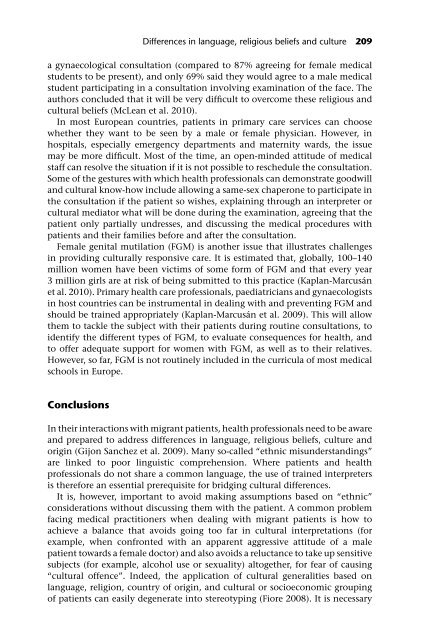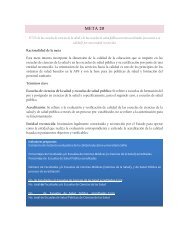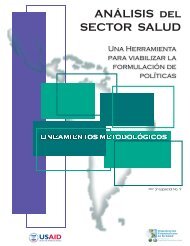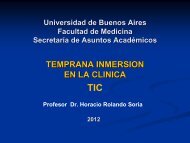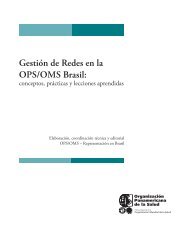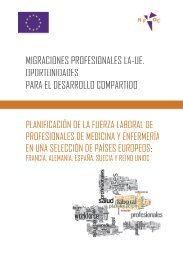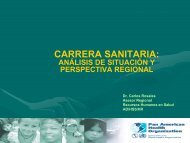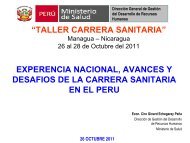English - World Health Organization Regional Office for Europe
English - World Health Organization Regional Office for Europe
English - World Health Organization Regional Office for Europe
Create successful ePaper yourself
Turn your PDF publications into a flip-book with our unique Google optimized e-Paper software.
Differences in language, religious beliefs and culture 209<br />
a gynaecological consultation (compared to 87% agreeing <strong>for</strong> female medical<br />
students to be present), and only 69% said they would agree to a male medical<br />
student participating in a consultation involving examination of the face. The<br />
authors concluded that it will be very difficult to overcome these religious and<br />
cultural beliefs (McLean et al. 2010).<br />
In most <strong>Europe</strong>an countries, patients in primary care services can choose<br />
whether they want to be seen by a male or female physician. However, in<br />
hospitals, especially emergency departments and maternity wards, the issue<br />
may be more difficult. Most of the time, an open-minded attitude of medical<br />
staff can resolve the situation if it is not possible to reschedule the consultation.<br />
Some of the gestures with which health professionals can demonstrate goodwill<br />
and cultural know-how include allowing a same-sex chaperone to participate in<br />
the consultation if the patient so wishes, explaining through an interpreter or<br />
cultural mediator what will be done during the examination, agreeing that the<br />
patient only partially undresses, and discussing the medical procedures with<br />
patients and their families be<strong>for</strong>e and after the consultation.<br />
Female genital mutilation (FGM) is another issue that illustrates challenges<br />
in providing culturally responsive care. It is estimated that, globally, 100–140<br />
million women have been victims of some <strong>for</strong>m of FGM and that every year<br />
3 million girls are at risk of being submitted to this practice (Kaplan-Marcusán<br />
et al. 2010). Primary health care professionals, paediatricians and gynaecologists<br />
in host countries can be instrumental in dealing with and preventing FGM and<br />
should be trained appropriately (Kaplan-Marcusán et al. 2009). This will allow<br />
them to tackle the subject with their patients during routine consultations, to<br />
identify the different types of FGM, to evaluate consequences <strong>for</strong> health, and<br />
to offer adequate support <strong>for</strong> women with FGM, as well as to their relatives.<br />
However, so far, FGM is not routinely included in the curricula of most medical<br />
schools in <strong>Europe</strong>.<br />
Conclusions<br />
In their interactions with migrant patients, health professionals need to be aware<br />
and prepared to address differences in language, religious beliefs, culture and<br />
origin (Gijon Sanchez et al. 2009). Many so-called “ethnic misunderstandings”<br />
are linked to poor linguistic comprehension. Where patients and health<br />
professionals do not share a common language, the use of trained interpreters<br />
is there<strong>for</strong>e an essential prerequisite <strong>for</strong> bridging cultural differences.<br />
It is, however, important to avoid making assumptions based on “ethnic”<br />
considerations without discussing them with the patient. A common problem<br />
facing medical practitioners when dealing with migrant patients is how to<br />
achieve a balance that avoids going too far in cultural interpretations (<strong>for</strong><br />
example, when confronted with an apparent aggressive attitude of a male<br />
patient towards a female doctor) and also avoids a reluctance to take up sensitive<br />
subjects (<strong>for</strong> example, alcohol use or sexuality) altogether, <strong>for</strong> fear of causing<br />
“cultural offence”. Indeed, the application of cultural generalities based on<br />
language, religion, country of origin, and cultural or socioeconomic grouping<br />
of patients can easily degenerate into stereotyping (Fiore 2008). It is necessary


